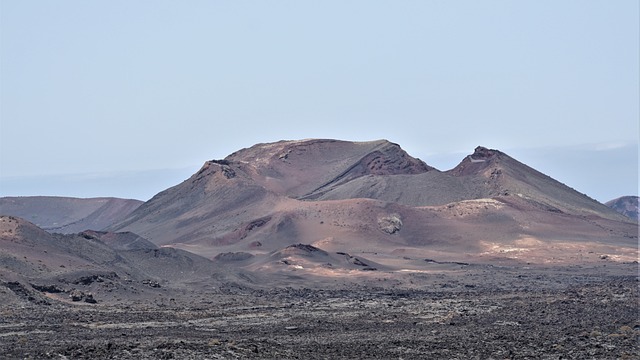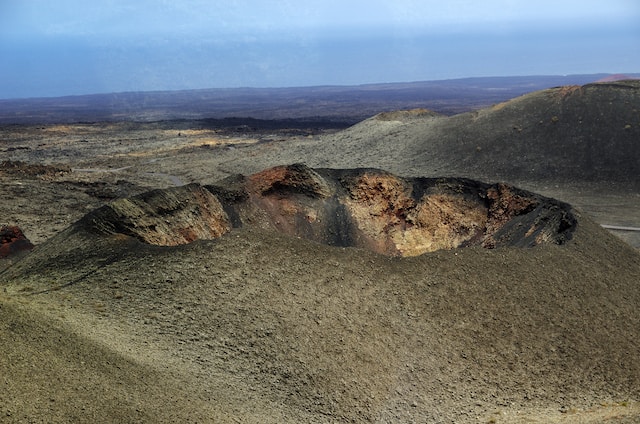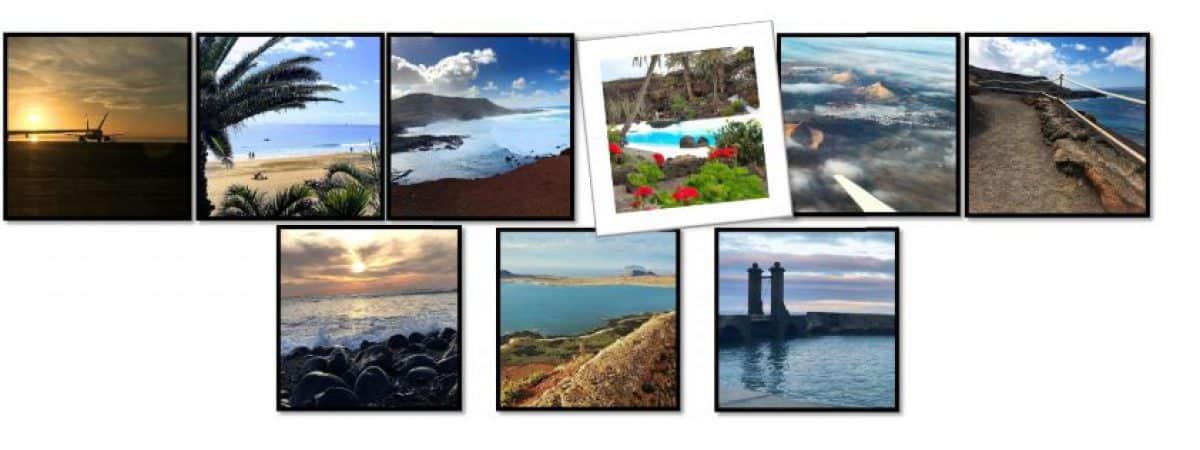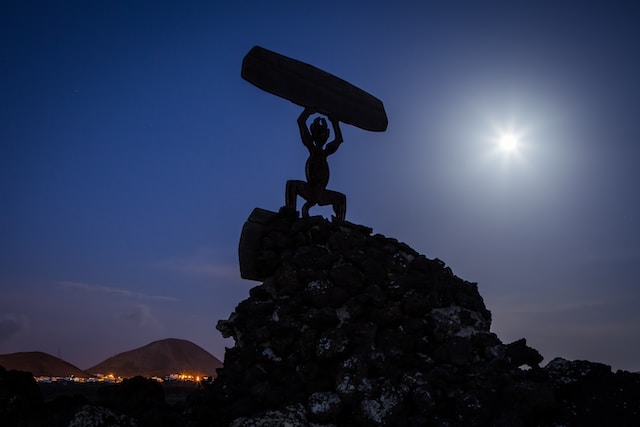This post is also available in:
 Español (Spanish)
Español (Spanish)
The island has an intriguing folklore filled with stories, tales, and myths. Some have become very popular even internationally, like the Legend of the Devil of Timanfaya in Lanzarote. If you’re unfamiliar with it, you’ve come to the right place. From your company’s website for Lanzarote airport transfers, we’ll tell you all about it.
History of Timanfaya National Park
The Timanfaya National Park is located between two municipalities: Yaiza and Tinajo. It covers an approximate area of 51.07 km in the southwest of Lanzarote. It boasts over 25 volcanoes, some of which are very emblematic of the island. Such is the case with the Fire Mountains, Montana Rajada, and La Caldera de Corazoncillo.
It’s part of the National Parks Network and is one of the most visited in all of Spain. It’s one of the most popular tourist attractions in Lanzarote’s history, and you can explore it with the Express Tour.
Origin and Volcanic Eruptions
Its origin dates back to the 17th and 19th centuries, when volcanic eruptions created the hundreds of craters that can be seen today in the majestic Timanfaya National Park.
According to historical documents, the most devastating eruptions occurred between 1st and 11th September 1730. As stated by the priest Lorenzo Curbelo, at least nine villages were buried under the lava. Tingafa, Mancha Blanca, Las Maretas, Santa Catalina, and Jaretas are some of them. Scientists estimate that over 1000 cubic metres of lava erupted, radically altering the island’s morphology.
The volcanic activity continued for the next 6 years, becoming the longest and most destructive eruption period ever recorded in the Canary Islands. The lava spread across the southern part of the island, covering a quarter of it, leaving destruction in its wake.
The volcanic activity had ceased, but in the 19th century, specifically in 1824, new eruptions occurred in the Tao, Nuevo del Fuego, and Tiguatón volcanoes. By October of that same year, the eruptions had completely stopped, and they have remained dormant ever since.
Impact on the Local Population
In the eruptions that took place between 1731 and 1732, due to the magnitude of the destruction of the nine villages we mentioned earlier, as well as the cultivated fields and livestock in that area, thousands of people lost their lives.
The remaining inhabitants were forced to migrate to other parts of the island due to the ongoing volcanic eruptions.
The eruptions of 1824 also had consequences, such as severe famines, causing many inhabitants to leave the area.
From that moment on, locals began to develop special cultivation techniques and take advantage of the fertility of volcanic soils. An example of this is seen in the vineyards of La Geria.

What is the legend of the Devil of Timanfaya?
Following the eruption of 1730, a significant legend of Timanfaya emerged, which later became one of the most famous in the Canary Islands. It’s the Legend of the Devil of Timanfaya in Lanzarote.
Popular tale of the lovers and the eruption
One of the famous Canary legends tells that on 1st September 1730, a wedding was taking place in the village of Timanfaya. The couple consisted of the son of one of the island’s wealthiest individuals and a young woman whose family cultivated medicinal plants.
In the midst of the celebration, a massive explosion shook the earth, and rocks and lava began raining down, destroying everything in their path. The guests and villagers began to run for shelter, but tragedy struck the young couple.
A large rock from the volcano crushed the bride, burying her. The groom, seeing this, took a five-pronged forge to try to move the rock to save her. When he finally managed to do so, he realised his beloved had died.
In his despair and grief, he carried his wife’s body, still holding the forge, and began running through the valley, searching for refuge, which he obviously couldn’t find.
Despite the smoke and ashes, some villagers could see the young man illuminated by the moonlight on a hill. He raised the five-pronged forge with both arms, and the onlookers sighed in sadness, saying, “poor devil”. The image of the groom then disappeared into the fiery Lanzarote landscape.
Locals say that from the young woman’s spilled blood, the plants her parents cultivated began to grow. They were named after the unfortunate couple, “Aloe Vera”, where Aloe was the man and Vera the woman.
Today, the figure of the young man with the five-pronged forge raised with both arms is very popular. Moreover, it’s the image of the Timanfaya National Park, where he lost his love due to the volcanic eruption.
Cultural Impact in Lanzarote
The legend of the Devil of Timanfaya has a significant influence on Lanzarote’s culture. As it’s the way they’ve chosen to tell the story of how the Timanfaya National Park was formed and the origin of its unique and striking volcanic landscape.
It’s worth noting that the volcanic eruptions were what gave rise to the park. This represents a historically significant event on the island.
The legend of the Devil of Timanfaya, despite having started centuries ago, remains a fascinating story today, imbued with symbolic meanings of happiness and hope. This is represented by the young couple, while death and tragedy are embodied in the rock that falls from the sky.
This story serves to showcase the strength and power of nature and its wrath, and at the same time, the fragility of humans.
Moreover, it’s a tale used to explain to the local population and visitors the dangers posed by volcanic eruptions. For the locals, the devil’s legend reminds them that the area is full of volcanoes, which, although dormant, are real.
Such stories, passed down orally from generation to generation, form part of a place’s popular culture. In this particular case, it has become a symbol of the island’s identity and is part of tourism in Lanzarote.
If you’re captivated by this legend and want to learn more about the place that gave rise to it, don’t hesitate to plan a trip and take a camel ride through this wonderful national park.

Who created the symbol of the Devil of Timanfaya?
At the entrance to the Timanfaya National Park stands a figure intended to mark the entry to the site. This image became the symbol of the park, and the concept was developed by the island’s most renowned artist.
The role of César Manrique
As with much of the artistic expression to be admired in Lanzarote, the symbol of the Devil of Timanfaya was designed by César Manrique. The figure marked the entrance to the Montañas del Fuego centre, which later became the Timanfaya National Park.
The image depicts a mischievous devil holding a sign above its head bearing the park’s name. It appears to be supported by its tail, which ends in an arrow.
Although the image of the Devil of Timanfaya is often associated with the legend mentioned earlier, there is no direct link, as Manrique’s creation was inspired by the image of hell.
Connection with Lanzarote’s visual identity
The figure of the Devil of Timanfaya went from being the emblem of the park to becoming a symbol of Lanzarote itself. Visitors recognise this image wherever they are on the island.
The design evokes the volcanic essence and untamed spirit of the island. It blends art, nature and culture.
Symbolism and presence of the devil on the island
Where to see the devil symbol
The image of the Devil of Timanfaya is found at the entrance of Timanfaya National Park. It is one of the first things seen upon arrival on this area, which is the heart of volcanic activity on the island. Its presence adds to the mysticism surrounding Lanzarote and represents the volcanic force and history that gave birth to the island.
Products and merchandise featuring the image
But the park is not the only place where this image can be seen. Its presence has spread beyond, to the point where it is considered a cultural icon. You can find it on souvenirs, such as jewellery, T-shirts, illustrations, mugs, paintings, decorative items, postcards, key-rings, and more.
The figure depicted on these items holds a five-pronged trident. Over the years, it has become part of the Lanzarote experience.
If you wish to purchase any of these products, you can find them in gift shops, local markets, or even in online stores.
Other Legends of Lanzarote
The island is full of museum houses, ruins, and typical tales that allow you to learn more about its culture and traditions. Among the most popular stories after the Legend of the Devil of Timanfaya are:
Queen Ico and the Test of Nobility
This Lanzarote legend tells that when a Spanish ship commanded by Matin Ruiz de Aveñado arrived, the island’s inhabitants prepared for battle. They were led by King Zonzamas.
However, the Spaniards decided to maintain peace. There were exchanges of gifts and goods between the King and Matin. They even invited the Spaniard to spend a few days at the sovereign’s house until he had to set sail.
Nine months after this event, the queen had a baby they named Ico. She had blonde hair and white skin, which made everyone doubt her origin and not accept her as an heir.
When her parents died, her brother Timanfaya was put in charge of a General Assembly. Meanwhile, the beautiful princess married a nobleman named Guanareme.
Later, the Spaniards returned to take some people as their slaves, capturing Timanfaya. So the position of king was vacant.
For Guanareme to take it, Ico had to pass a test proving she was worthy of the queen’s status. This involved locking her in a cave with three commoners and filling it with thick smoke for a while. If she survived, she would be deemed worthy.
She agreed and passed it thanks to a sponge given to her by her old nanny who visited her the day before the test.
The Legend of Olivina
This story is about a teenager named Olivina. She was a bit absent-minded but loved helping her grandfather in the summer. One morning, due to severe sunstroke, he decided to let her take the goats to graze in the usual place.
The young girl accepted the task, but unfortunately, in a moment of distraction, one of the animals was near a rock cliff. Trying to save it, it fell off the precipice.
When Olivina reached the beach, she began to cry green tears inconsolably. These did not dilute in the salty water. The seagulls, who were guardians of the sky for the goddess Timanfaya, collected some tears and took them to the goddess.
She told them to bury them in the volcanic rocks. And that’s how the famous Olivina stone was born, representing the union between the earth and humans.
We hope you found the Legend of the Devil of Timanfaya in Lanzarote interesting. If you wish to learn more about the island, remember to book transfers from Arrecife airport to Playa Blanca.
This post is also available in:
 Español (Spanish)
Español (Spanish)

